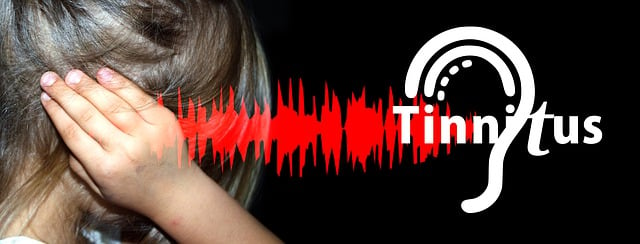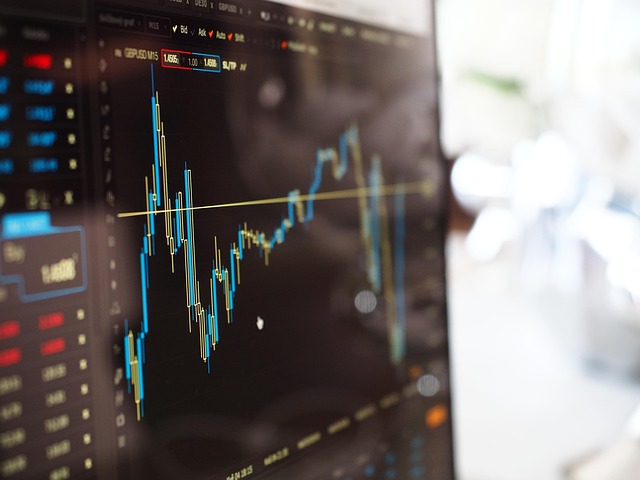How to See Volume in Trading: Master Volume Analysis in 2025
Author: Jameson Richman Expert
Published On: 2025-10-22
Prepared by Jameson Richman and our team of experts with over a decade of experience in cryptocurrency and digital asset analysis. Learn more about us.
How to see volume in trading is one of the most important questions any trader asks — from beginners to professionals. This article explains what volume represents, why it matters, how to view it across platforms (stocks, crypto, futures), practical indicators and setups, step-by-step instructions for common platforms, and actionable trading strategies to use volume effectively in 2025. You’ll find examples, best practices, pitfalls to avoid, and links to trusted resources and tools that make reading volume simple and actionable.

What is Trading Volume and Why It Matters
Trading volume is the number of shares, contracts, or units traded during a given time period. In simple terms, volume measures activity and interest. High volume confirms moves; low volume often signals weak conviction. Volume is a primary confirmation tool for price action and is commonly used in trend confirmation, breakout validation, and detecting reversals.
For a concise definition and background, see the Wikipedia page on trading volume: Trading volume (Wikipedia), and Investopedia’s practical breakdown: What is Trading Volume? (Investopedia).
Why volume is important
- Confirmation of trends: Rising price with rising volume is bullish; falling price with rising volume is bearish.
- Breakout validation: Breakouts with higher-than-average volume are more reliable.
- Divergence detection: Price making new highs with declining volume may indicate a weakening move.
- Liquidity and slippage: Higher volume means tighter spreads and less slippage, especially important for large orders.
Types of Volume Data
Understanding what kind of volume you’re looking at helps you interpret it correctly.
- Tick volume: Counts number of price changes—used by forex traders where actual volume data may be unavailable.
- Trade volume: Number of trades executed or units traded in a period (common in stocks and crypto).
- Dollar/Notional volume: Value traded (price × volume) — useful for comparing across instruments.
- On-balance measures: Derived indicators like On-Balance Volume (OBV) and Accumulation/Distribution that combine price direction with volume.
How to See Volume in Trading — Platforms and Tools (Step-by-Step)
Different platforms show volume differently. Below are step-by-step instructions for common charting platforms and broker tools so you can immediately start viewing volume data.
1. TradingView (desktop & web)
TradingView is one of the most widely used charting tools for stocks, crypto, and forex.
- Open a chart for the instrument you want to analyze.
- Click the "Indicators" button and search for “Volume”.
- Add "Volume" (histogram) to the chart — this displays volume per bar beneath price.
- For profile-based volume, add “Volume Profile” or “Visible Range Volume Profile”.
- Use indicators like OBV, VWAP, and Volume Weighted Moving Average for more context.
- If you want live order execution, you can connect TradingView to brokers following that comprehensive guide.
2. Broker / Exchange Native Charts (Binance, Bybit, Bitget, MEXC)
Most centralized exchanges show volume directly on their charting widgets:
- Open the market pair (e.g., BTC/USDT).
- Look below the price chart for the volume histogram; adjust the timeframe to interpret per-bar volumes.
- Use native tools like VWAP, order book, and trade history to complement volume.
If you’re new to crypto trading, you can open accounts on reliable exchanges: Binance registration, MEXC invite, Bitget referral, and Bybit invite. For an in-depth look at Bybit’s platform features in 2025, read this guide: Bybit Trading Platform in 2025.
3. Desktop Platforms (Thinkorswim, MetaTrader, NinjaTrader)
These platforms provide advanced volume tools including tick charts, footprint charts, and DOM:
- Add standard volume histograms to your chart via the indicators panel.
- For order flow, use footprint or volume profile plugins to see bid/ask volume at price levels.
- Use time and sales (tape) to see live executed volume and sizes.
4. Level 2 and Order Book Data (DOM)
To see real-time liquidity and large orders, use Level 2 order book views or Depth of Market (DOM). This shows limit orders on both sides of the market and helps you interpret probable support/resistance zones and potential absorption of market orders.

Common Volume Indicators and How to Use Them
Volume alone is useful, but pairing it with indicators helps clarify signals. Below are the most effective indicators and how to interpret them.
Volume Histogram
Basic display of volume per bar. Use moving averages of volume (e.g., 20-period) to see above/below average days.
On-Balance Volume (OBV)
OBV adds/subtracts volume based on whether price closed up or down. Rising OBV confirms uptrends; divergences between price and OBV can warn of reversals.
Volume Profile / VWAP
- Volume Profile: shows traded volume at price levels; identifies high volume nodes (HVN) and low volume nodes (LVN).
- VWAP (Volume Weighted Average Price): used by institutions as a benchmark; price above VWAP indicates buying pressure intraday.
Money Flow Index (MFI) & Accumulation/Distribution
MFI uses price and volume to identify overbought/oversold conditions; Acc/Dist helps spot accumulation or distribution phases across time.
Volume Oscillator
Compares short-term and long-term volume moving averages to detect surges or dry-ups in activity.
Interpreting Volume with Price Action: Practical Examples
Here are simple, actionable setups that use volume in the decision process.
Breakout Confirmation
- Identify a horizontal range or a trendline.
- Wait for price to close above the resistance with volume greater than the recent average (e.g., 20-period average).
- Enter on a retest of breakout if volume holds (lower volume on retest and higher volume on push is ideal).
False Breakout Detection
If price breaks out but volume is low relative to prior range volume, treat breakout skeptically — often a sign of a fake move.
Trend Strength and Divergence
- Uptrend with rising highs and increasing volume = strong trend.
- Uptrend with rising highs but declining volume = possible exhaustion; look for bearish divergence on OBV or MFI for reversal signals.
Support/Resistance Defined by Volume Profile
High Volume Nodes (HVNs) represent price areas where many transactions occurred; they tend to act as magnet/support-resistance. Low Volume Nodes can be fast-price movement zones.
Volume in Crypto vs Stocks vs Forex
Volume interpretation differs by market structure:
- Stocks & Crypto: Exchange-provided volume is reliable and directly comparable. Crypto markets show aggregate exchange volumes and order books per pair; use volume across exchanges if needed.
- Forex: No centralized volume — use tick volume as a proxy or volume indicators from your broker; combine with liquidity indicators like spreads.
- Futures & Options: Use contract-specific volume and open interest to measure participation and potential continuation.
For cryptocurrency traders, it’s helpful to review exchange-specific guides and market predictions. For example, read analysis and outlooks such as this Ripple (XRP) price prediction to see how volume and fundamentals interact: Ripple XRP Price Prediction 2040.

Order Flow and Footprint Charts — Advanced Volume Reading
If you want to dig deeper than bar-volume, order flow tools reveal the actual aggressor side (buy vs sell market orders) at each price level.
- Footprint charts: Show volume traded at bid vs ask at each price — revealing absorption or aggressive buying/selling.
- Time & Sales (the tape): Lists each executed trade and size — useful for real-time flow sensing.
- Volume Profile + DOM: Combine to see where liquidity is stacked and how market orders eat the book.
Practical Step-by-Step: How to See Volume in Trading on TradingView
A concise procedure you can follow right now:
- Open TradingView and choose your market symbol and timeframe.
- Click Indicators → type “Volume” → add the Volume histogram.
- Right-click the volume pane → Settings → enable “Color bars by price movement” to quickly see bullish vs bearish volume.
- Add “VWAP” (for intraday) and “Volume Profile (Visible Range)” for structural levels.
- Add OBV or Accumulation/Distribution to detect longer-term accumulation or distribution.
How to See Volume in Trading When Using a Broker App
Most broker apps include a volume histogram beneath the price chart. If it’s not visible, open chart settings or indicators and add volume. For Indian traders looking for safe and legitimate trading apps, this guide helps choose trustworthy apps: Which Trading App is Legitimate and Safe in India.

Using Volume When Trading Crypto — Quick Tips and Platforms
Volume in crypto can be more volatile and fragmented across exchanges. Use these tips:
- Check aggregated volume across major exchanges for a fuller picture.
- Use order book depth to confirm whether a move is supported by liquidity.
- For spot and derivatives, confirm volume across both to detect leverage-driven moves.
If you need step-by-step on choosing reliable crypto trading platforms or want to register, check the services and guides linked earlier and consider these platform referrals: Binance, MEXC, Bitget, and Bybit.
For traders focused on Bybit specifically, this in-depth 2025 review can help you understand how the platform handles volume and liquidity: Bybit Trading Platform in 2025: The Ultimate Guide.
Common Mistakes When Reading Volume
- Viewing volume in isolation: Always combine with price action and context (timeframe, news, open interest).
- Ignore timeframe differences: Volume that is significant on a 1-minute chart may be irrelevant on a daily chart.
- Rely solely on exchange volume for crypto: Liquidity spreads across venues — check multiple sources.
- Misinterpreting tick volume in forex: Tick volume is a proxy; treat signals conservatively.
Actionable Volume-Based Trading Strategies
Below are simple strategies you can implement. Each includes entry, stop, and management ideas.
Volume Breakout Strategy (Swing Trading)
- Timeframe: Daily or 4H
- Conditions: Price in consolidation; breakout above resistance with volume > 1.5× the 20-period average volume.
- Entry: On candle close above resistance.
- Stop: Below the breakout candle low or the consolidation zone.
- Target: Measured move or next resistance; scale out partial profits on high-volume moves.
VWAP Fade (Intraday)
- Timeframe: Intraday (5m–15m)
- Conditions: Price deviates strongly from VWAP with shrinking volume during the pullback.
- Entry: Reversion toward VWAP when volume drops on the pullback.
- Stop: Tight, slightly beyond recent high/low.
Volume Divergence Reversal
- Timeframe: 1H–Daily
- Conditions: Price makes higher highs while OBV or volume histogram makes lower highs.
- Entry: Confirm with bearish price action (rejection candle) and enter short.
- Stop: Above the new price high.

How to Incorporate Fundamental Flow (News + Volume)
High-impact news often causes sudden volume spikes. Always check whether a volume surge is news-driven — earnings announcements, economic releases, or major crypto updates (e.g., token listings or regulatory actions). Combine news calendars (e.g., official economic calendars) with your volume observations to avoid being shaken out by scheduled events.
For crypto-specific events and how to handle large news-related moves, see related practical guides — for example, step-by-step sell strategies: How to Sell Bitcoin on Trade Republic.
Volume and Risk Management
- Use position sizing linked to volatility and liquidity. Higher volume allows larger positions without major slippage.
- Place stops in logical zones (support/resistance, volume nodes) rather than arbitrarily.
- Avoid trading low-volume instruments in fast-moving markets — risk of gap and slippage.
Checklist: How to See Volume in Trading — Quick Reference
- Choose the correct timeframe for your strategy.
- Add volume histogram and a 20-period volume moving average.
- Add OBV and VWAP for additional context (VWAP for intraday).
- Check order book and time & sales for live confirmation if available.
- Compare exchange volumes for crypto; note suspicious spikes from wash trading.
- Look for divergences between price and volume-based indicators.
- Confirm breakouts with volume > average; be cautious with low-volume breakouts.

Further Reading and Trusted Resources
To deepen your knowledge, consider reading technical literature and up-to-date guides. Some useful resources include educational pages and market reports:
- Trading volume basics — Wikipedia: Trading volume
- Practical definitions and examples — Investopedia: Trading Volume
- Platform-specific guides — connecting TradingView to brokers: Connecting TradingView to Broker
- Crypto trading platform reviews and tutorials: Bybit Trading Platform in 2025
- Market outlooks and asset-specific analysis such as ripple/XRP price outlook: Ripple (XRP) Price Prediction
- Trading app safety guide for Indian traders: Which Trading App is Legitimate and Safe in India
Conclusion — Seeing Volume Clearly in 2025
Knowing how to see volume in trading is essential for reliable decision-making. In 2025, the fundamentals remain the same: volume confirms price, reveals conviction, and helps you avoid traps like low-volume breakouts. Use a combination of volume histogram, VWAP, OBV, order flow, and volume profile based on your timeframe and market (stocks, crypto, futures). Apply strict risk management and always cross-check volume signals with context — news, liquidity, and market structure.
Start practicing by adding volume indicators to your charts today, test volume-based rules in a demo or small-size trades, and refine your edge. If you’re trading crypto and want to explore major exchanges, you can register here: Binance, MEXC, Bitget, or Bybit.
For further tactical breakdowns and platform-specific guidance, review the linked guides above. Mastering volume will give you a clearer edge in markets and help you trade with higher conviction and better risk control.